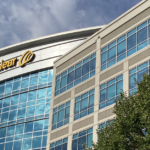Introduced in December 2019, the Cochlear™ Osia® System has revolutionized clinical care and outcomes for patients with conductive hearing loss, mixed hearing loss and Single-Sided Deafness (SSD). Today, this innovative and powerful system is implanted in more than 10,000 recipients worldwide. Fast forward to August 2023 when we introduced our next generation Osia System, featuring the OSI300 implant, which is now the world’s most chosen active bone conduction system.* Even more, in April 2024, the Osia System obtained U.S. Food and Drug Administration clearance to lower the age of implantation to 5 years-old.
We recently collected the most commonly asked questions from audiologists and surgeons and are delighted to share this information with you…
How is the next generation Osia System different than the first commercially available system?
The OSI300 implant is Cochlear’s latest advancement in active bone conduction technology which utilizes our proven Piezo Power™ actuator with a new diametric magnet design. This combination allows patients access to 1.5 T and 3.0 T MRI without need for magnet removal or risk of performance degradation.ꝉ
How are Osia System recipients able to undergo MRI with the OSI300 implant?
Several key features make the Osia System unique. To start, the Osia System does not contain any magnetic material. Additionally, the Piezo Power actuator and new diametric magnet set it apart as the only active bone conduction system enabling MRI at both 1.5 T and 3.0 T. The new diametric magnet rotates to align with the magnetic field but can also be removed if necessary. This design offers flexibility in imaging to achieve the best possible diagnostic results. Additionally, if scanning the head with the magnet in place, the following techniques help to reduce artifact:
- increased receiver bandwidth
- reduced slice thickness
- increasing matrix size
- switching frequency
- phase-encoding gradient
- fast spin-echo techniques
- metal artifact reduction techniques (ie MAVRIC, VAT-WARP sequences) help to reduce artifact
This was illustrated by Nassiri et al, (2023)3 who reported consistent diagnostic imaging of the contralateral side, as well as T1 and T2-weighted images of the ipsilateral temporal bone with magnet in place.
How do I describe what “piezoelectric” means?
Osia’s Piezo Power actuator technology is the “heart” of the Osia System. It is made up of layered piezoelectric material which expands and contracts when voltage is applied. The attached counterweights then amplify the vibrations, and these vibrations are delivered to the cochlea via bone conduction, enabling your patient to hear.
Additionally, piezoelectric materials require less power to transmit high frequencies compared to other bone conduction options which have electromagnetic transducers. This is what gives the Osia System a significant high-frequency, high-power advantage in a slim design.
What is the fitting range of the Osia System?
The Cochlear Osia System is the most powerful active bone conduction system, fitting up to a 55 dB HL bone conduction pure tone average1. The Maximum Force Output of the Osia System also demonstrates a significant high frequency advantage with an average of 12 dB additional high frequency gain compared to percutaneous bone conduction systems with equivalent fitting ranges. This robust benefit means you have a powerful and effective treatment option to manage conductive, mixed, and SSD hearing losses.
What advantages does the OSI300 offer during surgery?
Osia’s thin design allows for a straightforward surgery2 and offers flexibility in both incision and placement to accommodate surgical preferences, anatomical variance, or previous incisions and surgeries. Fixated by the proven BI300 implant, only 57 mm³ of bone removal is required (when using 3mm BI300), allowing for minimal drilling and implantation in patients with limited bone thickness.
Thank you for choosing the Cochlear Osia System for your patients. We hope you are as pleased with your patients hearing outcomes as we are. Please continue to ask questions and send us feedback on your experiences when working with the Cochlear Osia System – we love to hear from you!
Stay tuned for a future ProNews article to hear from surgeons and audiologists about how they incorporate the Osia System into their practice and be sure to subscribe to ProNews so you don’t miss it.
If you are new to working with the Osia System or would like to learn more, check out our website or contact your local Cochlear representative.
* Based on Cochlear global sales data and estimated market share for the previous financial year.
ꝉ The OSI300 implant is MR conditional at 1.5 T and 3.0 T with magnet in place. Refer to the Osia MRI Guidelines for further information.
1 Factsheet BCI 602 Active Bone Conduction Implant BONEBRIDGE System. MED-EL Medical Electronics; 29214 r4.0
2 Lau K, Scotta G, Wright K, et al. First United Kingdom experience of the novel Osia active transcutaneous piezoelectric bone conduction implant. Eur Arch Otorhinolaryngol. 2020;10
3 Nassiri, A.M., Messina, S.A., Benson, J.C., Lane, J.I., McGee, K.P., Trzasko, J.D. and Carlson, M.L. (2024), Magnetic Resonance Imaging Artifact Associated With Transcutaneous Bone Conduction Implants: Cholesteatoma and Vestibular Schwannoma Surveillance. Otolaryngol Head Neck Surg, 170: 187-194.
In the United States and Canada, the Osia System is indicated for children ages 5 and older.
About the author:
Jessica Ballard, AuD, CCC-A is a Clinical Technical Project Manager at Cochlear. She received her undergraduate training in Communication Disorders at Eastern Washington University and obtained a Doctor of Audiology degree from the University of Oklahoma Health Sciences Center. Following completion of her education, Jessica worked as a cochlear implant audiologist at Hearts for Hearing in Oklahoma City for three years specializing in pediatric audiology services and cochlear implants. Following this, Jessica joined Cochlear Americas and has gained experience is clinical, surgical, and outreach roles and currently holds the position of Clinical Technical Project Manager II. In this role, Jessica is the clinical subject matter expert for multiple projects, and provides support for complex surgical and clinical cases.


